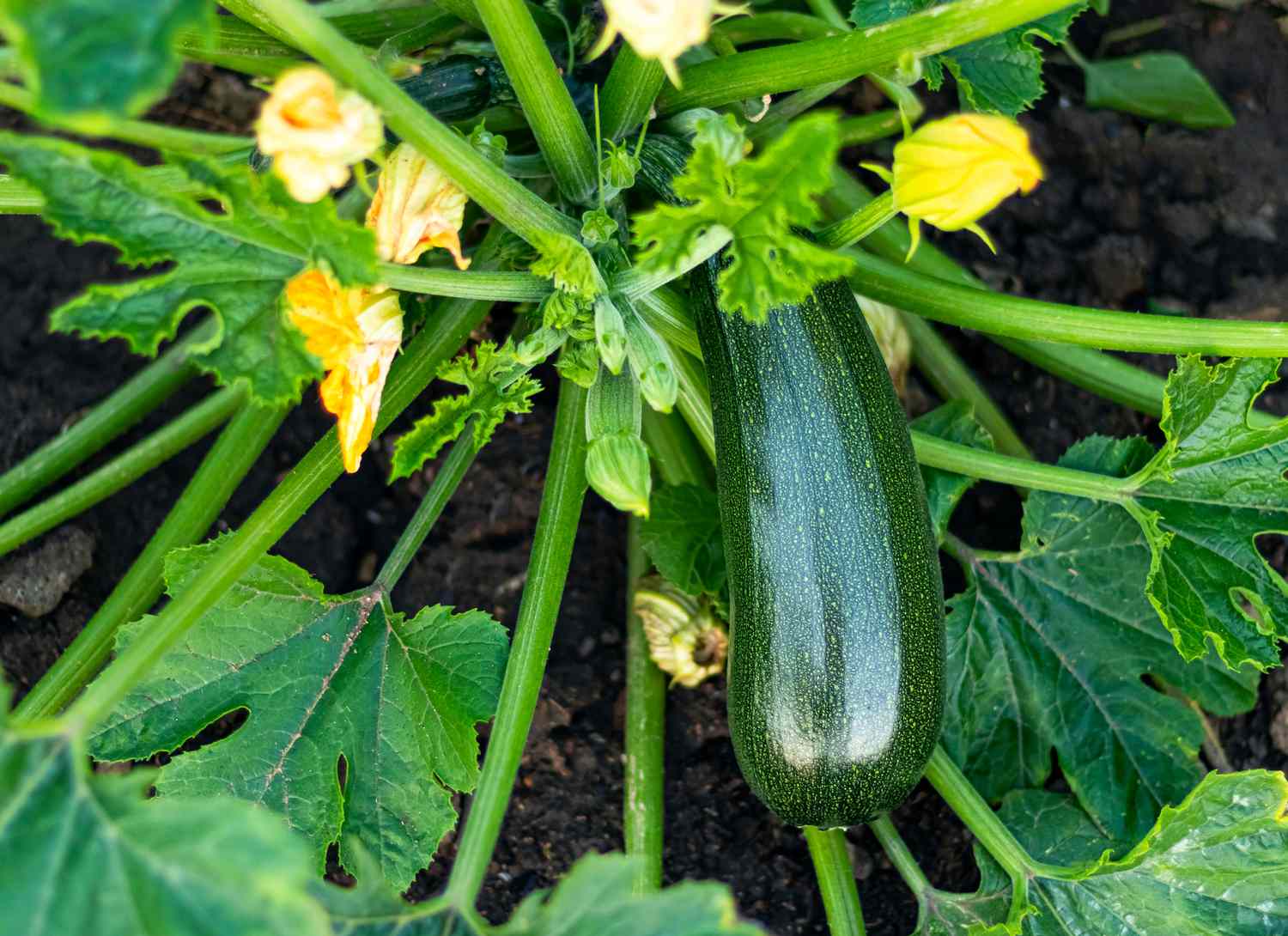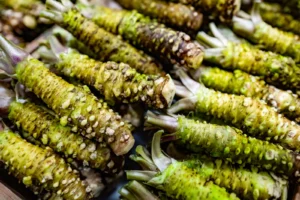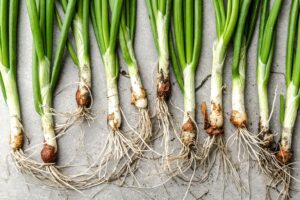How to Grow and Use Zucchini: A Complete Guide
Growing zucchini is one of the most rewarding experiences for both beginner and experienced gardeners. This versatile summer squash is not only prolific but also incredibly versatile in the kitchen. Whether you have a spacious garden, a small balcony for container growing, or even just a sunny windowsill, you can successfully grow your own zucchini with the right approach.
Getting Started with Zucchini
Zucchini (Cucurbita pepo) is a warm-season vegetable that belongs to the cucurbit family, alongside cucumbers and melons. Before diving into growing methods, it’s important to understand some basics about this popular vegetable.
Choosing the Right Variety
The variety you choose can make a significant difference in your growing success:
- Black Beauty: A classic dark green zucchini, reliable and productive
- Golden: Yellow-skinned variety with a slightly sweeter flavor
- Cocozelle: Italian heirloom with striped skin
- Round: Space-saving varieties perfect for containers
- Climbing: Vertical-growing varieties like ‘Tromboncino’ for small spaces
When to Plant Zucchini
Timing is crucial when growing zucchini. According to the USDA Agricultural Research Service, zucchini should be planted after all danger of frost has passed and soil temperatures reach at least 60°F (15.6°C).
For most regions in the US:
- Spring planting: 1-2 weeks after the last frost date
- Summer planting: For a fall harvest in warmer regions
- Indoor seed starting: 3-4 weeks before transplanting outdoors
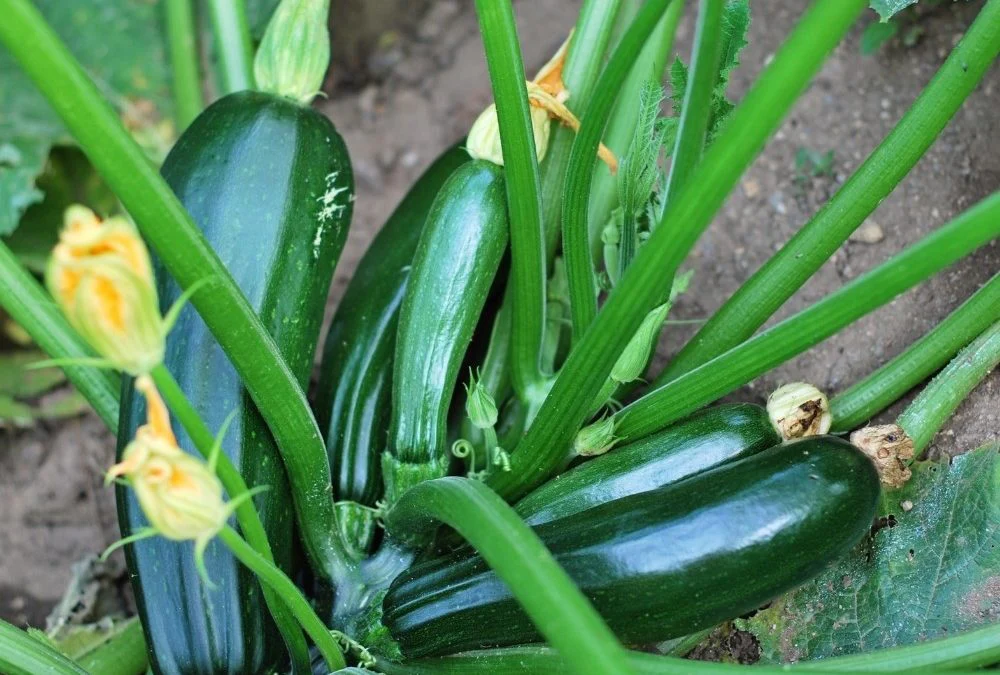
Growing Zucchini from Seed
Starting zucchini from seed is straightforward and economical. Here’s how to ensure success:
Direct Sowing in the Garden
- Prepare the soil: Mix in plenty of compost or aged manure
- Create mounds: Form 12-inch diameter hills about 3-4 feet apart
- Plant seeds: Sow 3-5 seeds per hill, 1 inch deep
- Water thoroughly: Keep soil moist but not waterlogged
- Thin seedlings: Once they have 2-3 true leaves, keep the strongest 2-3 plants per hill
Starting Seeds Indoors
If you want to get a head start on the growing season:
- Use biodegradable pots: Zucchini doesn’t transplant well due to sensitive roots
- Fill with seed-starting mix: Use a light, well-draining medium
- Plant 1-2 seeds per pot: 1 inch deep
- Maintain temperature: Keep at 70-75°F (21-24°C) for optimal germination
- Provide light: Once sprouted, give seedlings 6-8 hours of direct sunlight
- Harden off: Gradually acclimate seedlings to outdoor conditions over 7-10 days
- Transplant carefully: Move to garden when seedlings have 2-3 true leaves
Growing Zucchini in Containers
Limited space? No problem! Zucchini can thrive in containers with proper care:
Container Requirements
- Size: Minimum 5-gallon pot (larger is better)
- Drainage: Multiple drainage holes are essential
- Material: Terra cotta, plastic, or fabric grow bags all work well
- Soil: High-quality potting mix with added compost
Container Growing Steps
- Position your container: Place in a spot that receives 6-8 hours of sunlight
- Fill with soil: Leave 2 inches from the top
- Plant seeds or transplants: 1-2 plants per 5-gallon container
- Water consistently: Container plants dry out faster than garden plants
- Feed regularly: Apply balanced organic fertilizer every 3-4 weeks
- Support as needed: Consider a small trellis for compact climbing varieties
Indoor Zucchini Growing
Yes, you can grow zucchini indoors with the right conditions:
Indoor Growing Requirements
- Light: South-facing window or grow lights (minimum 12-14 hours daily)
- Temperature: Maintain 65-75°F (18-24°C)
- Pollination: You’ll need to hand-pollinate flowers (more on this below)
- Varieties: Choose compact bush varieties like ‘Eight Ball’ or ‘Midnight’
Indoor Growing Steps
- Select a large container: At least 5 gallons with excellent drainage
- Use quality potting mix: Add 30% compost for nutrients
- Position near light: Place within 6 inches of a grow light or directly in a south-facing window
- Monitor humidity: Use a small fan for air circulation to prevent powdery mildew
- Hand-pollinate: Essential for fruit production (instructions below)
Zucchini Growing Requirements
| Growing Factor | Requirement |
|---|---|
| Sunlight | 6-8 hours of direct sunlight daily |
| Soil pH | 6.0-7.5 (slightly acidic to neutral) |
| Spacing | 3-4 feet between plants |
| Water | 1-2 inches per week |
| Temperature | 70-95°F (21-35°C) optimal growth |
| Days to Maturity | 45-60 days from transplant |
| Companion Plants | Nasturtiums, corn, beans, peas |
| Poor Companions | Potatoes, fennel |
| USDA Growing Zones | 3-10 (annual in all zones) |
| Container Size | Minimum 5-gallon pot per plant |
Essential Zucchini Care
No matter where you grow your zucchini, these care practices will help ensure a bountiful harvest:
Watering
Zucchini plants need consistent moisture but dislike wet foliage:
- Amount: 1-2 inches of water per week
- Method: Water at the base of plants, avoid overhead watering
- Timing: Early morning is ideal
- Mulch: Apply 2-3 inches of organic mulch to retain moisture
Fertilizing
Zucchini are heavy feeders that benefit from regular nutrition:
- Before planting: Incorporate compost or aged manure
- Early season: Balanced fertilizer (10-10-10)
- During fruiting: Switch to lower nitrogen, higher phosphorus formula (5-10-10)
- Application: Follow package directions for amounts
Pollination
Understanding pollination is crucial for successful zucchini production:
- Male vs. Female flowers: Male flowers appear first on long stems; females have a tiny zucchini at the base
- Natural pollinators: Bees do most of the work outdoors
- Hand pollination: For indoor growing or when pollinators are scarce
- Identify a male flower (no mini zucchini at base)
- Remove the petals to expose the stamen
- Gently brush the stamen against the center of female flowers
- Repeat with multiple female flowers for best results
Common Zucchini Problems and Solutions
Even experienced gardeners face challenges with zucchini. Here’s how to address common issues:

Pest Management
- Squash bugs: Handpick and destroy eggs (brick-colored clusters on leaf undersides)
- Cucumber beetles: Use floating row covers until flowering
- Squash vine borers: Wrap stems with aluminum foil at soil level
- Aphids: Spray with insecticidal soap or neem oil
Disease Prevention
- Powdery mildew: Space plants properly for air circulation
- Bacterial wilt: Control cucumber beetles (they spread the disease)
- Blossom end rot: Ensure consistent watering and adequate calcium
- Mosaic virus: Remove and destroy infected plants; control aphids
Harvesting and Using Your Zucchini
The reward for your efforts comes at harvest time:
When to Harvest
- Size: For best flavor, harvest when 6-8 inches long
- Appearance: Shiny skin indicates freshness
- Frequency: Check daily during peak season
- Technique: Cut stems with a sharp knife rather than twisting
Storage Tips
- Short-term: Up to 1-2 weeks in refrigerator crisper drawer
- Freezing: Blanch slices for 3 minutes, cool, and freeze
- Dehydrating: Slice thinly and dry for zucchini chips
- Preservation: Can in relishes, pickles, or chutneys
Culinary Uses
The versatility of zucchini makes it a kitchen favorite:
- Raw: Spiralized into “zoodles” or thinly sliced in salads
- Grilled: Brush with olive oil and grill 2-3 minutes per side
- Sautéed: Quick-cook with garlic and herbs
- Baked: Zucchini bread, muffins, or brownies
- Stuffed: Halve lengthwise, scoop out centers, fill, and bake
- Fried: Battered and fried into fritters or tempura
Zucchini in the US Market
Zucchini has seen steady growth in the American market:
Market Statistics
- Production: Over 400 million pounds produced annually in the US
- Leading states: California, Florida, New York, and Georgia
- Consumption: Average American consumes about 7.5 pounds annually
- Market growth: Increased 25% over the past decade
- Local markets: Farmers’ markets sell at premium prices during peak season
Economic Considerations for Home Growers
- Cost savings: A $3 packet of seeds can yield over $50 worth of zucchini
- Space efficiency: Bush varieties can produce 3-5 pounds per plant
- Extended season: Succession planting can provide harvests for months
- Value-added products: Baked goods and preserves add economic value
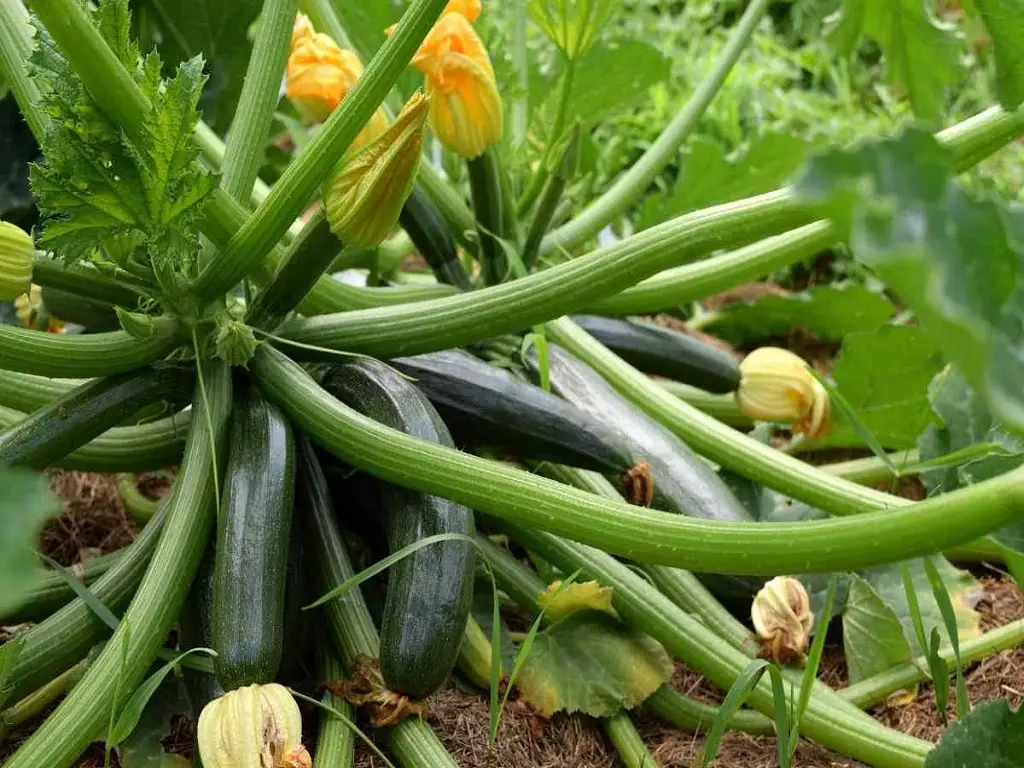
Advanced Growing Techniques
Once you’ve mastered the basics, consider these techniques to maximize your zucchini production:
Vertical Growing
Save space and reduce disease pressure by growing upward:
- Install trellis: Set up at planting time to avoid root disturbance
- Choose climbing varieties: ‘Tromboncino’ or other climbing types
- Train vines: Gently tie main stems to trellis with soft material
- Support fruit: Use cloth slings for heavy fruits as they develop
Season Extension
Enjoy zucchini for a longer period:
- Cold frames: Start plants 2-3 weeks earlier in spring
- Row covers: Protect from early fall frosts
- Succession planting: Start new plants every 3-4 weeks
- Fall planting: Calculate days to maturity from first fall frost date
Conclusion
Growing zucchini offers tremendous rewards with relatively little effort. Whether you’re cultivating a garden patch, tending containers on a patio, or nurturing indoor plants under grow lights, you can enjoy the satisfaction of harvesting your own homegrown zucchini. By following the guidance in this article, you’ll be well-equipped to grow abundant, healthy zucchini plants that will keep your kitchen supplied with this versatile vegetable throughout the growing season.
Remember that patience and observation are key skills in gardening. Pay attention to your plants’ needs, adjust your care routine as necessary, and don’t be afraid to experiment with different varieties and techniques..
